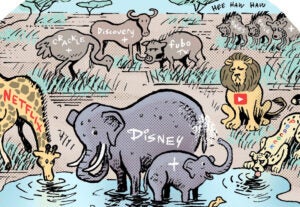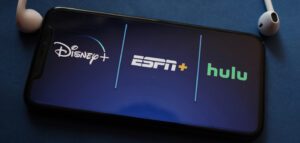 “The Sell-Sider” is a column written by the sell side of the digital media community.
“The Sell-Sider” is a column written by the sell side of the digital media community.
Today’s column is written by Scott Gatz, CEO and founder at Q.Digital.
As a publisher, I want my advertisers to succeed in reaching my audience. I want advertisers to have brand impact and drive sales and engagement. A successful customer is a returning customer, and I like making that happen.
That means I want all advertisers’ ads to be seen by real people, but I fear that an overfocus on viewability is getting in the way of advertisers’ actual success. When an advertiser is looking for brand lift or awareness, solely paying attention to viewability leads to marketing with one hand tied behind its back.
Publishers obsess on overall viewability metrics; we tweak page layouts, we play with lazy loading and do whatever we can to improve offerings. Some publishers have cut out large swaths of inventory in service of viewability scores. GroupM and MRC have stated that viewability is on the rise thanks to this focus.
But what about brand impact on premium publishers? How has that risen?
I have seen some amazing creative showcasing beautiful products, films, vacation sights, fashion and even just impactful messages. Creative shops can do wonders within the canvas of a large 300×600 or 970×90-pixel ad unit, as well as the the larger IAB Rising Stars ad units, such as the billboard, which is 970×250 pixels, or the portrait, which rings in at 300×1050 pixels.
These units have the potential to inspire users to think more about a brand or ignite interest. And there’s data to back it up: Rising Stars units generate 30% more brand lift and three times the ad recall. Size matters.
But publishers are now no longer incented to recommend these terrific units to clients with agencies that pay only on viewable impressions. If 100% of pixels must be in view, publishers will certainly push clients toward smaller sizes. I’m seeing this all the time on apps and mobile websites, such as The New York Times. On mobile, instead of a giving advertisers a 300×250-pixel ad within an article, publishers will direct them to a smaller, yet fully viewable, 320×50. You might not be able to clearly see a logo in that space but it will be 100% “viewable,” right?
It’s even more ironic when these advertisers ask for a brand-lift study at the same time. Don’t waste your money, I’ll tell you the results: Not as good as you’d like.
I always thought marketers were rewarded for how much they actually move the needle on awareness, purchase intent and a lift in sales. Maybe I’m wrong. Maybe CMOs really don’t care how many people buy products, just that no one paid for an ad where only 500 of 600 pixels were seen.
AdExchanger Daily
Get our editors’ roundup delivered to your inbox every weekday.
Daily Roundup
It’s time for publishers to push back on the specific technical requirements of viewability and force agencies and clients to answer the “why” question.
Why are they concerned about viewability? Fear of fraud? If so, publishers can direct them to trusted premium properties, which may even be their competitors.
Do clients have a fear of placements no one ever scrolls to? Got it, publishers can schedule appropriate positions since they all know their most-viewed units.
Do advertisers want more clicks, brand lift or higher engagement rate with a rich media ad? If that’s the case, advertisers can have a serious discussion with publishers while they throw away that viewability report from their agency’s tech partner.
Publishers have a whole toolbox of ways to measure and achieve advertisers’ goals, ranging from brand lift studies to conversion tracking and regular campaign optimization. Just by taking the time to force a simple conversation about goals, publishers can show advertisers movement on their real goals.
It is a publisher’s job to deliver actual success for its advertisers. Let’s help make sure the success advertisers achieve is the success that they want, not success that is measured in a percentage of pixels.
Follow Scott Gatz (@sgatz), Q.Digital (@WeAreQDigital) and AdExchanger (@adexchanger) on Twitter.













